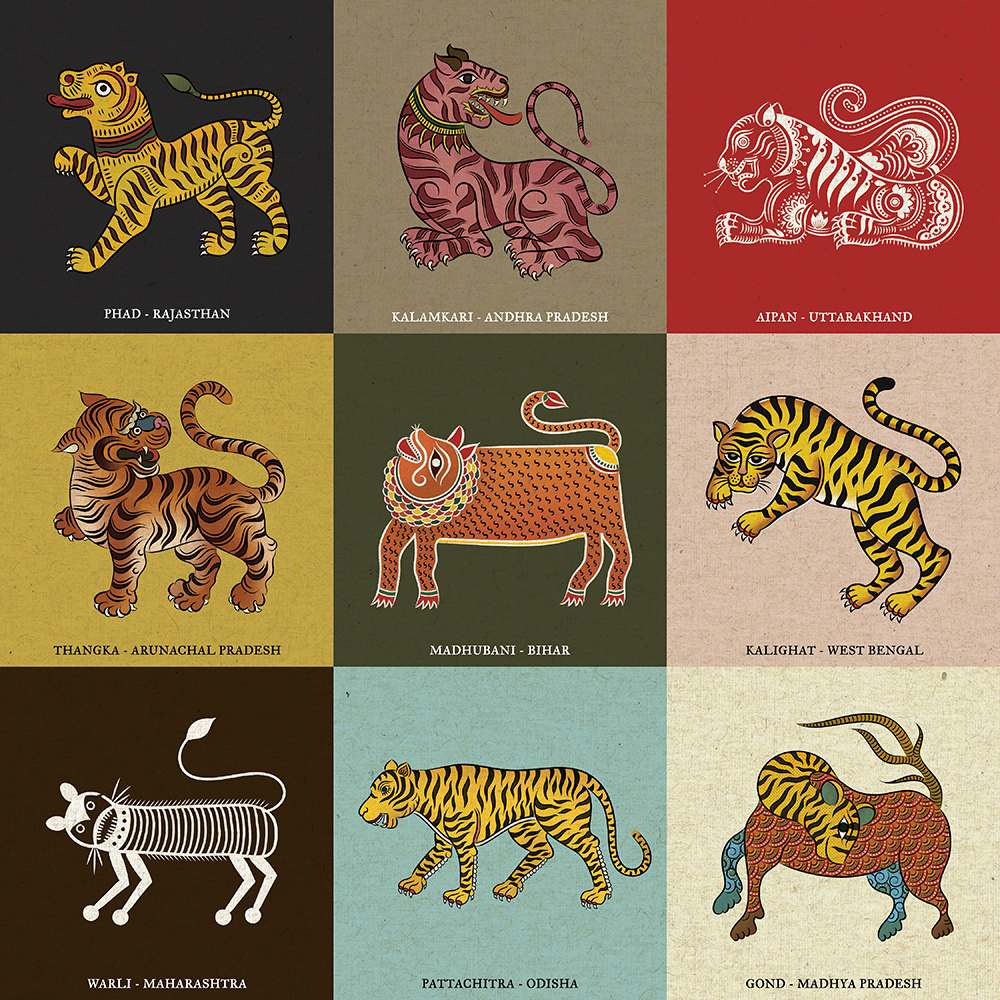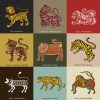| Size | 10 x 10 inches, 15 X 15 inches, 20 x 20 inches, 30 x 30 inches |
|---|---|
| Media | Archival Canvas, Archival Paper |
| Note | * Shipping charges will be extra. |
9 Tigers
₹2,500.00 – ₹17,500.00
We can see not more than what we have seen- a paradox that is as expanding as it is limiting. What seems to be a sight is a crafted vision and events are concealed compositions, made of all of our logical and visceral collections. Nothing illustrates this better than the fact that expression comes in as many forms and colours as soil types and skin tones in India. Folk art is a repository of innocent recordings of interactions between humans and the wild since time immemorial. Not just a recreation, it is the history of land and culture in documentation- figurative and factual. It is a telling in constant continuation- a treasure of immense value and invention.
A Warli tiger by the inhabitants of northern Western Ghats is a sum of plain lines and dots that best serve basic identification while a Gond tiger by the tribes of Central India is almost like a forest hallucination, a walking co-existence of trees, antelopes and the big cat. Representations become elemental with simple intentions and wilder with increasing proximity to dense forests. The height of the tallest tree in the region seems to set reference for the length of bodies. Wise as much as the grandfather of the tribe and fierce (and sometimes furious) as much as the eldest brother of the family. A Thangka tiger by the humans of Himalayas flows like the winds and rules the mountains while a Madhubani tiger by folks of riverine civilisations bends like a safe home construction. Shades of the sun gleam on the skin and colours of the local soil show as the stripes. Clad in worldly ornamentation, a Phad or a Kalamkari tiger by painters of Royal Thar & Deccan empires guards their pride and grandeur while a Kalighat tiger by the artists of Bengali renaissance models a graceful modern poise. An Aipan tiger roaming in the dense Sal forests of Shivalik is an illusionist, a shape-shifter while a gentle Patachitra tiger by the traditional artists of northern eastern coasts holds a godly position on walls of temples.
Here’s presenting 9 Tigers, a sketch-note for some very intuitive yet mathematical observations. Which one of these looks like the tiger you have met?


